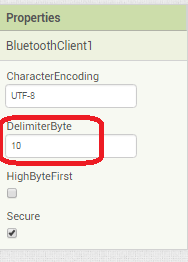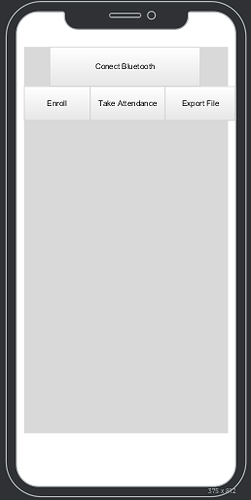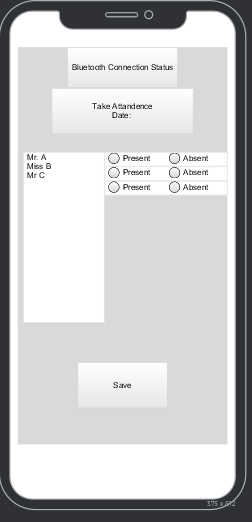For Attendance taking, I suggest a separate TinyDB NameSpace 'Attendance', with one tag per yyyyMMdd day (assuming you will be taking only one attendance per day) and each day's value would be a table (list of lists) with each row containing:
- yyyyMMdd date, (yes, I know this is redundant, but it would be helpful if you collect rows later)
- SurName,
- First Name,
- Matriculation Number,
- Fingerprint ID or 0 if not present
This table is easily converted to csv format for export using the native AI2 table to csv (csv from table?) block from the Lists pallette.
The fingerprint taking process would need a List Picker loaded with student surname,FirstName Elements. When Selected, that List Picker event should load displays of the student's other data (Matriculation Number, Fingerprint ID) from the appropriate NameSpaces, and request a scan from the fingerprint sensor. When a scan result arrives, it should be added as a row to today's Attendance table.
For setting today's date, just use a Label.Text and the Clock from the Sensors drawer.
Here are two ways to handle present/not present in List Pickers, to avoid the alignment problem in your checkbox scheme:
Finally, here is how to set up New Line message delimiters in AI2, standard advice:
Please see the Delimiter article in FAQ
Be sure to use println() at the end of each message to send from the sending device, to signal end of message. Do not rely on timing for this, which is unreliable.
In the AI2 Designer, set the Delimiter attribute of the BlueTooth Client component to 10 to recognize the End of Line character.

Also, return data is not immediately available after sending a request,
you have to start a Clock Timer repeating and watch for its arrival in the Clock Timer event. The repeat rate of the Clock Timer should be faster than the transmission rate in the sending device, to not flood the AI2 buffers.
In your Clock Timer, you should check
Is the BlueTooth Client still Connected?
Is Bytes Available > 0?
IF Bytes Available > 0 THEN
set message var to BT.ReceiveText(-1)
This takes advantage of a special case in the ReceiveText block:
ReceiveText(numberOfBytes)
Receive text from the connected Bluetooth device. If numberOfBytes is less than 0, read until a delimiter byte value is received.
If you are sending multiple data values per message separated by | or comma, have your message split into a local or global variable for inspection before trying to select list items from it. Test if (length of list(split list result) >= expected list length) before doing any select list item operations, to avoid taking a long walk on a short pier. This bulletproofing is necessary in case your sending device sneaks in some commentary messages with the data values.





